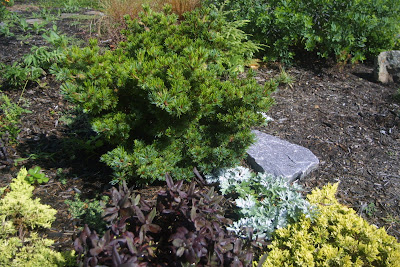 Last year was the first year I did any bulb planting in the fall for spring flowers. I probably planted 300 bulbs in total: tulips, daffodils, crocuses, snowdrops, miniature iris, and scilla. To be honest, the results were middling. The hundred or so daffodils came up so late that I spent the entire spring nervous they had been eaten by my voracious skunks. The tulip display I was most excited about, a large swath of 50 Princess Irenes punctuated with 10 Purple Princes turned out....eh.
Last year was the first year I did any bulb planting in the fall for spring flowers. I probably planted 300 bulbs in total: tulips, daffodils, crocuses, snowdrops, miniature iris, and scilla. To be honest, the results were middling. The hundred or so daffodils came up so late that I spent the entire spring nervous they had been eaten by my voracious skunks. The tulip display I was most excited about, a large swath of 50 Princess Irenes punctuated with 10 Purple Princes turned out....eh.  The Pink Impression tulips I choose to set off the delicate flowers of the Daphne 'Carol Mackie' were too tall, too pink, and too early. And don't get me started on the critter who ate absolutely every one of my crocus buds just moments before their bloom.
The Pink Impression tulips I choose to set off the delicate flowers of the Daphne 'Carol Mackie' were too tall, too pink, and too early. And don't get me started on the critter who ate absolutely every one of my crocus buds just moments before their bloom. But it wasn't a total disaster. I really enjoyed watching the snowdrops appear when nothing else was even thinking about waking up, and most of the other small spring bulbs in the bed with the crocuses beneath my Hamamelis × intermedia 'Arnold Promise' were quite cute and not chomped at all. I planted orange-and-red-streaked lily-flowering Ballerina Tulips with Basket of Gold that worked well. The creamy white Maureens brought some bright light to the black-and-white Obama garden. 

My favorite were the Blue Ribbons placed with the catmint (Nepeta 'Walker's Low') around the Fothergilla 'Mt. Airy'.
So now the question is what to plant next year. I'm definitely going to try for the right pink for the Daphne again. I need something shorter and later blooming, so I am going to try a lily flowering tulip China Pink. And even though the Pink Impressions didn't work for the Daphne, I thought they would look stunning in front of the forsythia, so I'll pop a few of those on my order. I think I'll add another white tulip to the Obama garden, but one that blooms earlier and has just a touch of pink to play off the new leaves of the red barberry. I'd also like to choose some tulips for near the red-twig dogwood and around the baptisa near the mailbox, but I haven't made any decisions on colors yet. Hmmm, I think it is time to go peruse the Scheeper's catalog again.











